A Fashion Revolution Comes for Brides
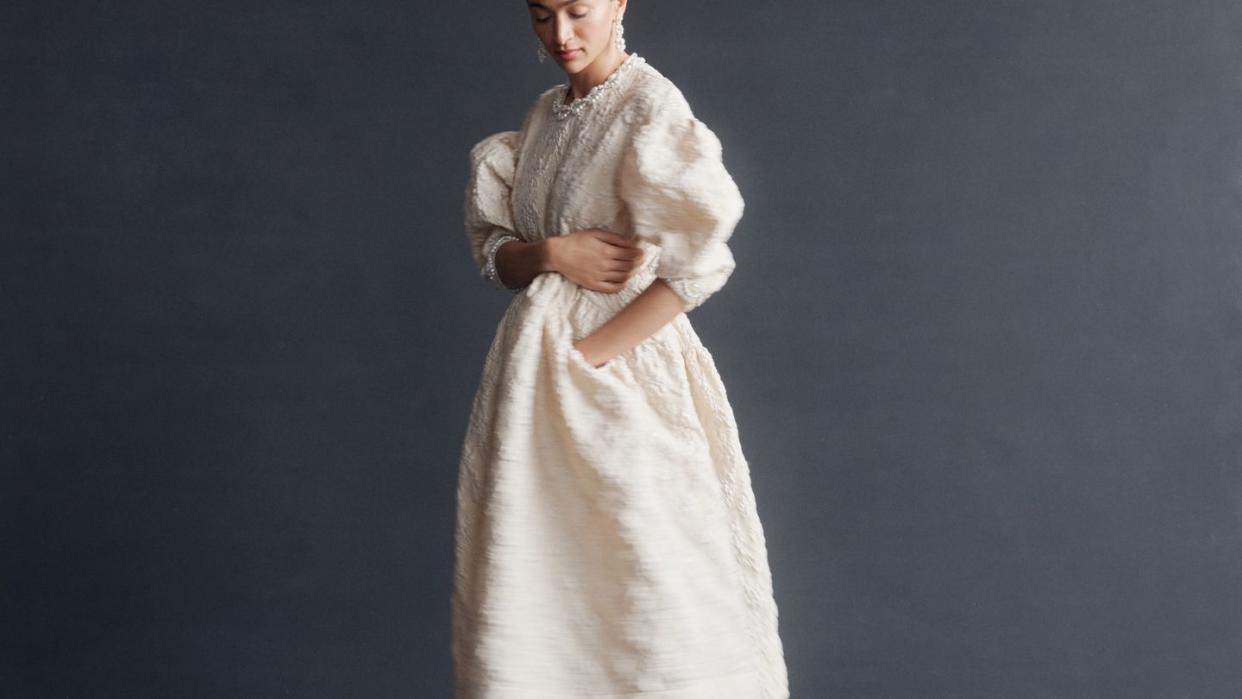
World history (and current events) have taught us that every societal institution, no matter how prestigious or seemingly important, will one day will be cross-examined by the very populace it serves—especially now, when it feels like no one is beyond reproach. It’s been a subtle shift, but a quiet revolution is playing out at the end of church aisles, in private gardens, and on stone courthouse steps today, a reexamination of the Western formalities of the bridal dress. Rules once considered terra firma have softened, and been manipulated into new forms and definitions of what it means to be a bride. As on a corset, the strings of expectation have been loosened, and a new feeling of autonomy and independence has rushed in like a gasp of fresh air.
Tiffany Hsu, VP of fashion buying for e-tailer Mytheresa, recently wed her beau in a London register office. “When I went to the registry office, I wore a white chiffon [dress] with black flowers all over it, and it had a two-meter train, and [was] completely transparent, and I was wearing just underwear underneath it,” she tells me. This pièce de résistance was the work of her designer friend Yang Li, creative director for the label Shang Xia.
What was the reaction from the British governmental staff? “People at the registry office were looking at me like, What the hell is going on here?! Because most girls just wear a midi-white dress to sign,” Hsu said. “I just wore the most opulent thing I could get at the time …. My friends [thought] it was beautiful, so that’s all good for me.”
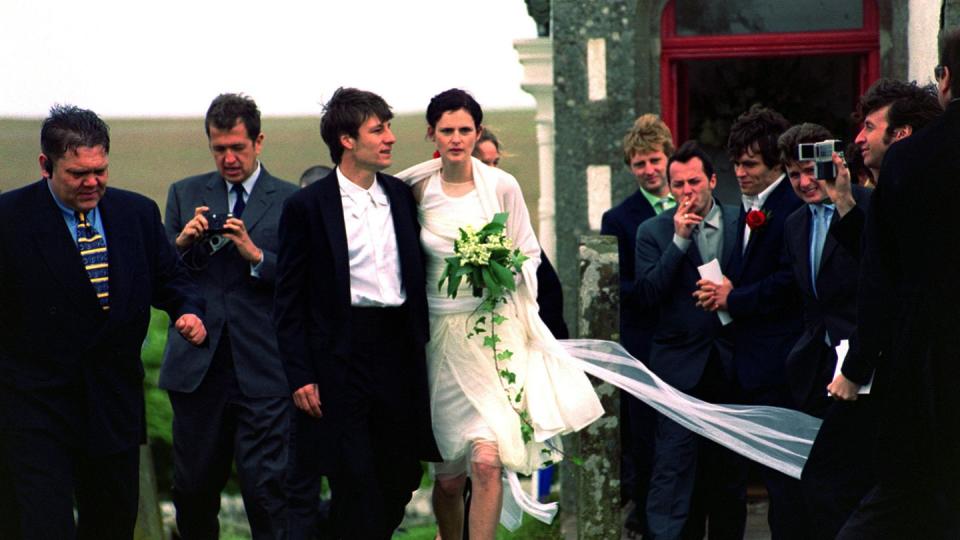
For certain women, a pretty $10,000 dress from a renowned atelier is a choice too steeped in convention, especially if you make your living looking at clothes. This isn’t exactly new: When the late model Stella Tennant married photographer David Lasnet in 1999, she wore a white Helmut Lang that still looks almost shockingly simplistic. A tank shift dress to the knee, with yards of thin tulle wrapped around her body and arms; a gentle touch that somehow felt romantic, and diffused Lang’s inherent, intellectual coldness.
Model Kristen McMenamy wore an unusual Chanel for her 1997 nuptials: a light gown referencing Grecian togas, with soft draped shoulder train, in the color of champagne. She looked like a Pre-Raphaelite angel. Karl Lagerfeld walked her down the aisle and gave her away.
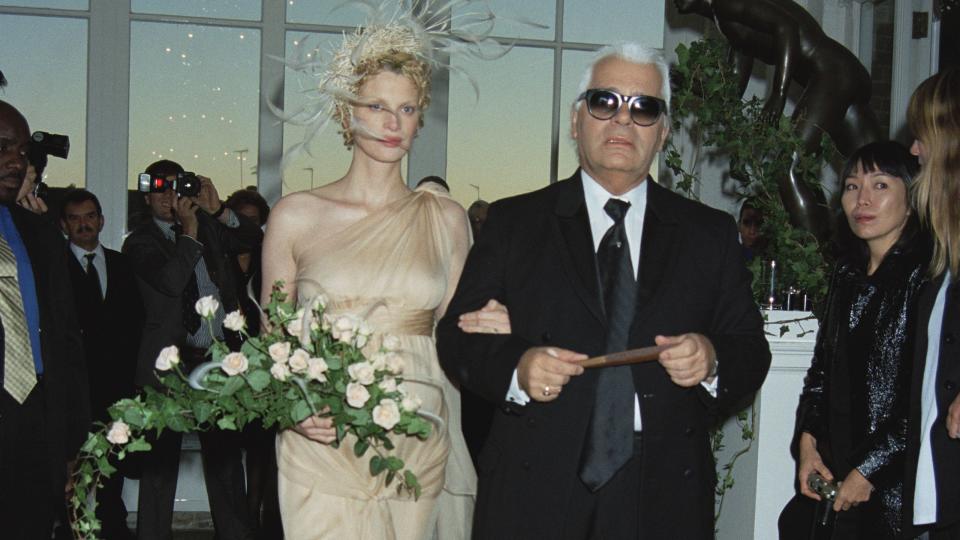
Increasingly, though, it isn’t just supermodels who are making statements on their wedding day. The gown, traditionally, is meant to project to the world supposed unspoken truths about the bride: her taste, her beauty, her class, her femininity, her intellect, and for some, unfortunately, her worth. But as women’s thoughts and feelings about marriage, matrimony, and equality evolve, many feel the dress needs to say something different. Perhaps bringing fashion, with all its whimsy and contradictions, into the equation allows brides to make a more nuanced statement.
Designers and retailers are responding in kind. Hsu, of Mytheresa, isn’t just a former bride, but also a high-profile fashion executive who oversees one of the internet’s most fashionable bridal offerings. “We are not here to provide them their first dress,” she says. “We are here to offer the party dress, or the rehearsal dinner [dress].” She tells me the bride they service is going to get the ceremonial dress from an atelier-level designer or brand. But for ancillary events around the main ceremony, the Mytheresa customer is still looking for solid, even fun, designs that stand out.
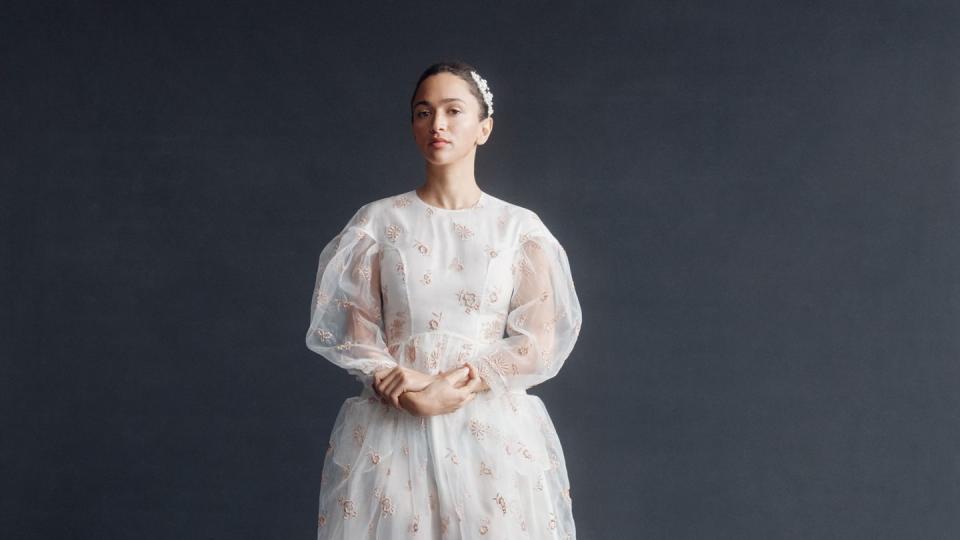
One designer who has become beloved for beautiful, conceptual bridal offerings is Simone Rocha, with whom Mytheresa collaborated for a bridal capsule in 2021. The partnership was a success—a collection of soft, light shorter dresses, most with an articulated waist and some sort of volume in the sleeve. “I don’t know if people bought it for the[ir] wedding, or if they were just beautiful dresses,” Hsu says. “We wanted to keep it very Simone Rocha, so we obviously didn’t have to-the-floor poofy gowns.”
That’s in keeping with the Mytheresa bridal selection: “On our website [we offer] something that’s more playful, a little bit more arty,” Hsu says. Other designers who rise to the top of the list as important for Mytheresa include Cecilie Bahnsen (feminine but off-kilter volume), the Australian Alex Perry (slick, city design using classical proportions), and the recently departed Vivienne Westwood (romantic, corseted gowns with a statement draped couture hip). Westwood “outperformed our expectations,” Hsu says, excited that the customer understood the designer’s complex offering (which, suitably, comes at an elevated price).

Several designers have taken notice of the success that “bridal-ish” designs can bring. In America, Sandy Liang entered the market in 2013 with her cool, doll-like gathered pieces. On the other end of the spectrum sits Rosie Assoulin, who treats volume like a sculptor would marble, and whose designs, first introduced for Resort 2014, have a monied, Upper East Side feel, minus the haughty edges. In part, it mirrors the situation in Europe, where fashion giants like Yves Saint Laurent, Lagerfeld, and Cristóbal Balenciaga regularly waded into the gossamer waters of bridal design. (It’s tradition to feature la mariée—the bride—at the end of haute couture shows in Paris.)
But unlike those couture gowns, the typical designer dress can feel, perhaps ironically, like a bargain. The dress is often one of the most expensive elements of the wedding; according to bridal authority the Knot, the average dress in the United States costs about $1,800. For atelier dresses, like those of Vera Wang, prices are around $3,000 and upward. For a custom gown from someone like Wang, the price is discreet, and the ominous “Schedule an appointment” is shown in lieu of any figure.
Assoulin’s and Liang’s clothes range from $2,800 to $7,000, serving a bridal audience that wants something special, conceptual yet beautiful, constructed using the best haute dressmaking techniques (like hidden grosgrain stays and soft, hand-stitched breast cups) money can pay for.
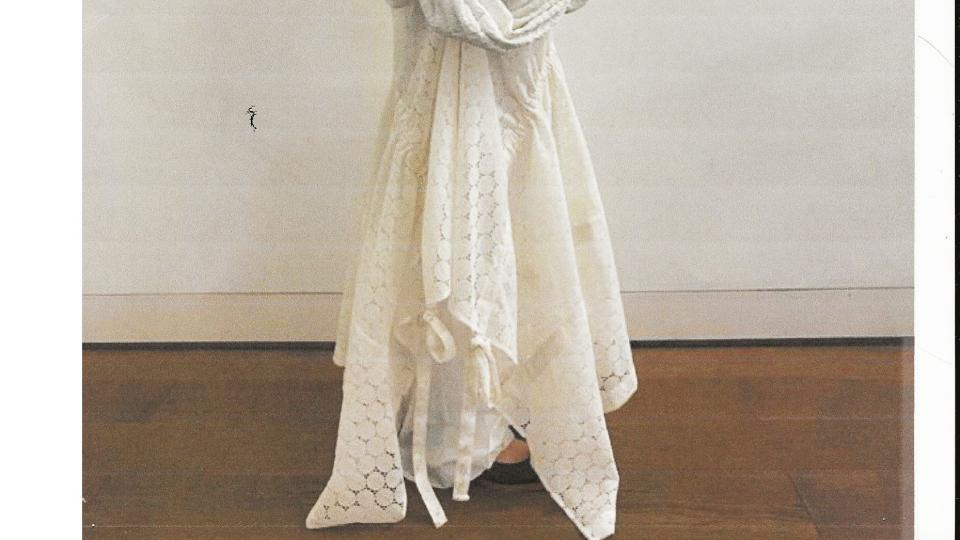
For brides who have developed this kind of nontraditional taste, ateliers have emerged to meet their needs. Amy Trinh and Evan Phillips of the British collection Wed Studio have been making beautiful, even exquisite, wedding options since 2019. The result is a mix of radical yet grounded proportion and subtle coloring, with an expert play using volume, shine, angle, and drape. All ingredients of progressive design.
Over email, Trinh writes about the freedom bridal design offers. “Not every client will want to do something completely radical,” she says, “but it’s definitely a chance to explore more experimental ideas or difficult processes that are probably too expensive for brands to develop in [ready-to-wear] and maybe too much for the general person to explore in their everyday wardrobe. It’s basically like doing couture! So, it gives everyone involved a chance to push the possibilities until we reach a point where the dress is perfect.”

Sustainability has also led to unusual choices: Many brides want vintage. Katelyn Cutbirth, a Texas-bred, London-based stylist, found her wedding dress during her bachelorette party in Barcelona. After a long period of searching inside a vintage shop, she found her dress hanging from the ceiling. (Surely a sign.) She knew she had found the one, describing it to me: “It’s pure lace, and then it has a lining of yellow … it’s like the [most] minidress you’ve ever seen in your whole life, and then I wore Margiela Tabis.”
It checked all of Cutbirth’s boxes: “I really wanted to wear vintage …” she says, plus: “It fit me perfectly, like a glove.” And: “It was $40.”
Sielian Lie, owner of Sielian Vintage in Beverly Hills, one of the country’s best resources for curated vintage, says, “We have a lot of women shopping for vintage bridal,” adding that “they prefer [it] because it’s unique and it’s beautiful.” Vintage, she notes, is “more in-demand than before.”
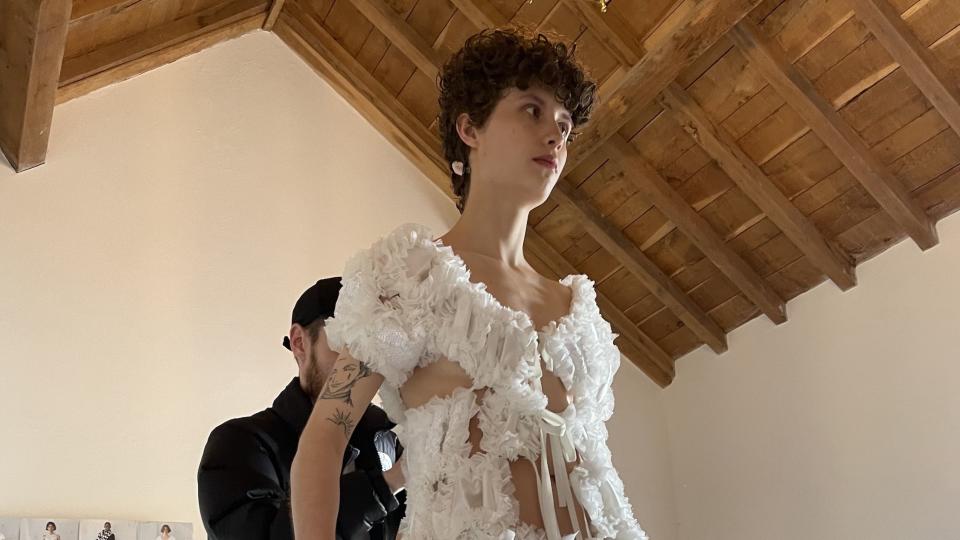
All this talk about dress has me thinking about how I could project myself should I get married. Far from the Pinterest boards and stuffy “say yes to the dress” bridal salons with their horrid clips of yore, my mind drifts to: a huge, thick papal-inspired blanket embroidered with floating feathers, constructed out of a menagerie of similarly colored fine fabrics. (A dream combination of Jean Paul Gaultier Fall 1999, and the finale bridal cape that Lagerfeld threw on Alek Wek for Spring 2004 Chanel couture.)
Or maybe just an impeccably cut, knee-length bespoke coat from F. Caraceni, constructed out of black Italian cotton twill, with a suppressed waist, nipped shoulders, and a wide lapel, upon which a diamond brooch is affixed, in as many carats as I can get.
The security guards for the jewel can stand right behind me during the service … for dramatic effect.
You Might Also Like


